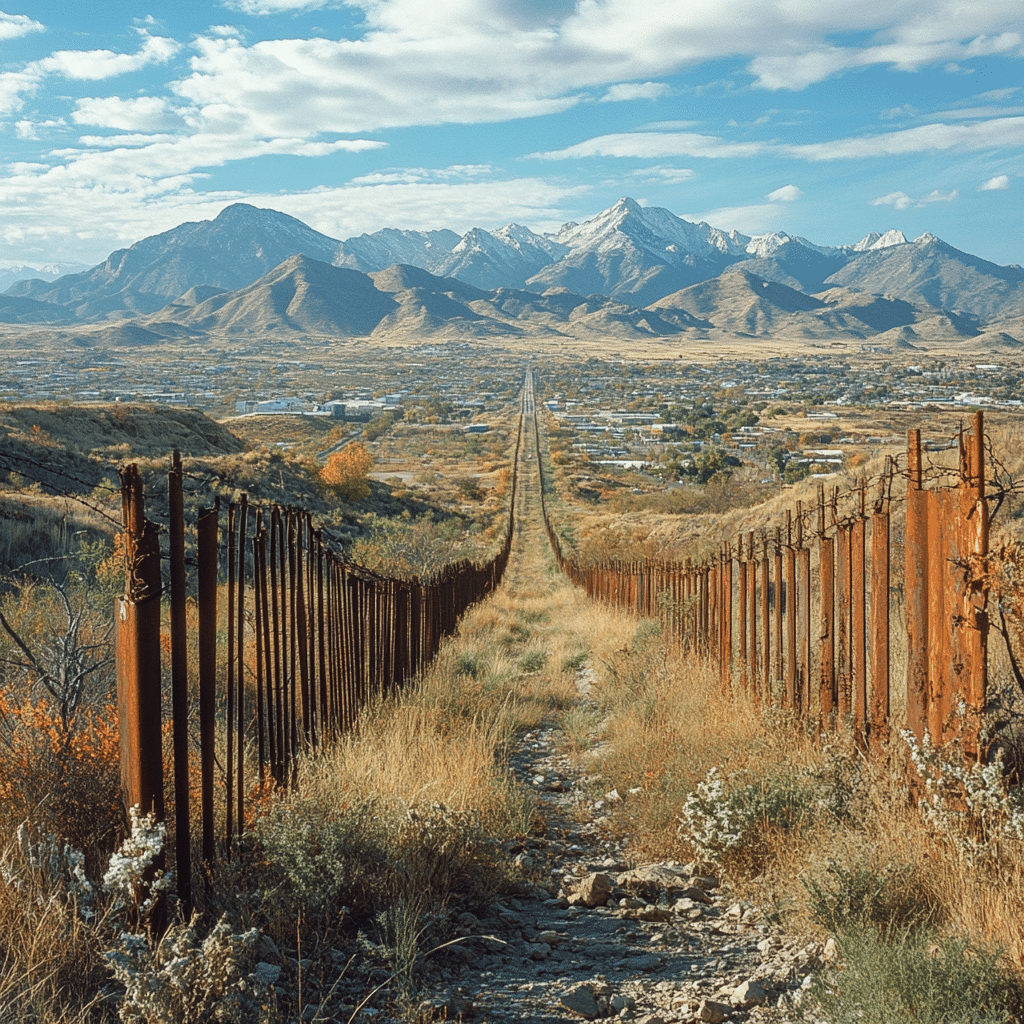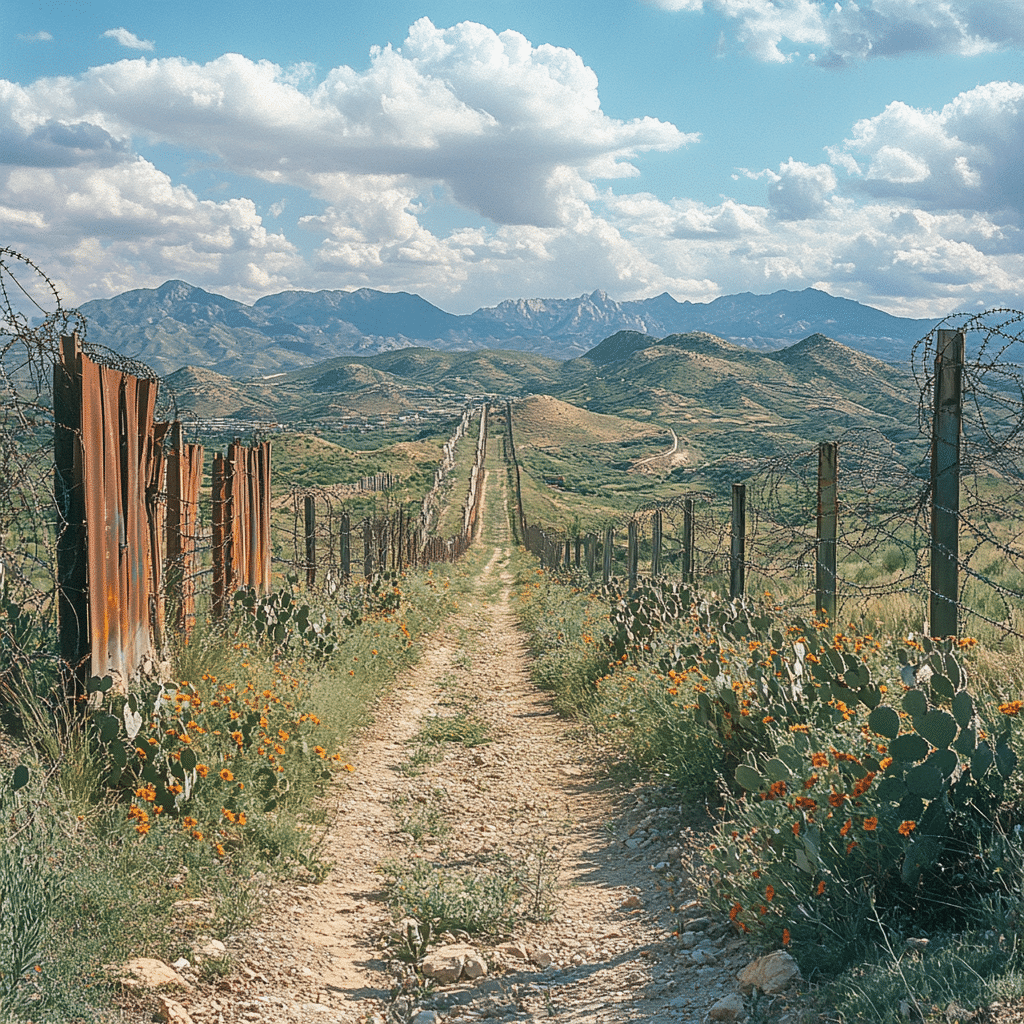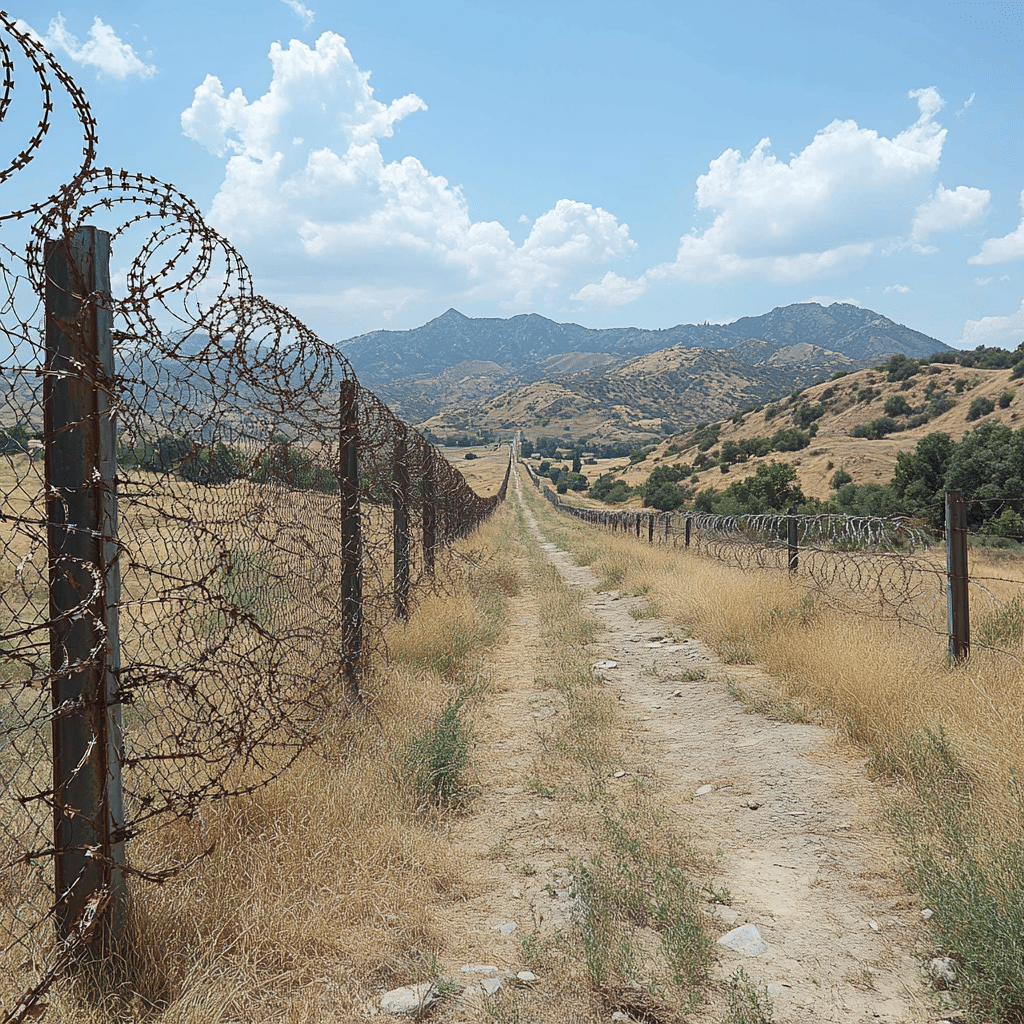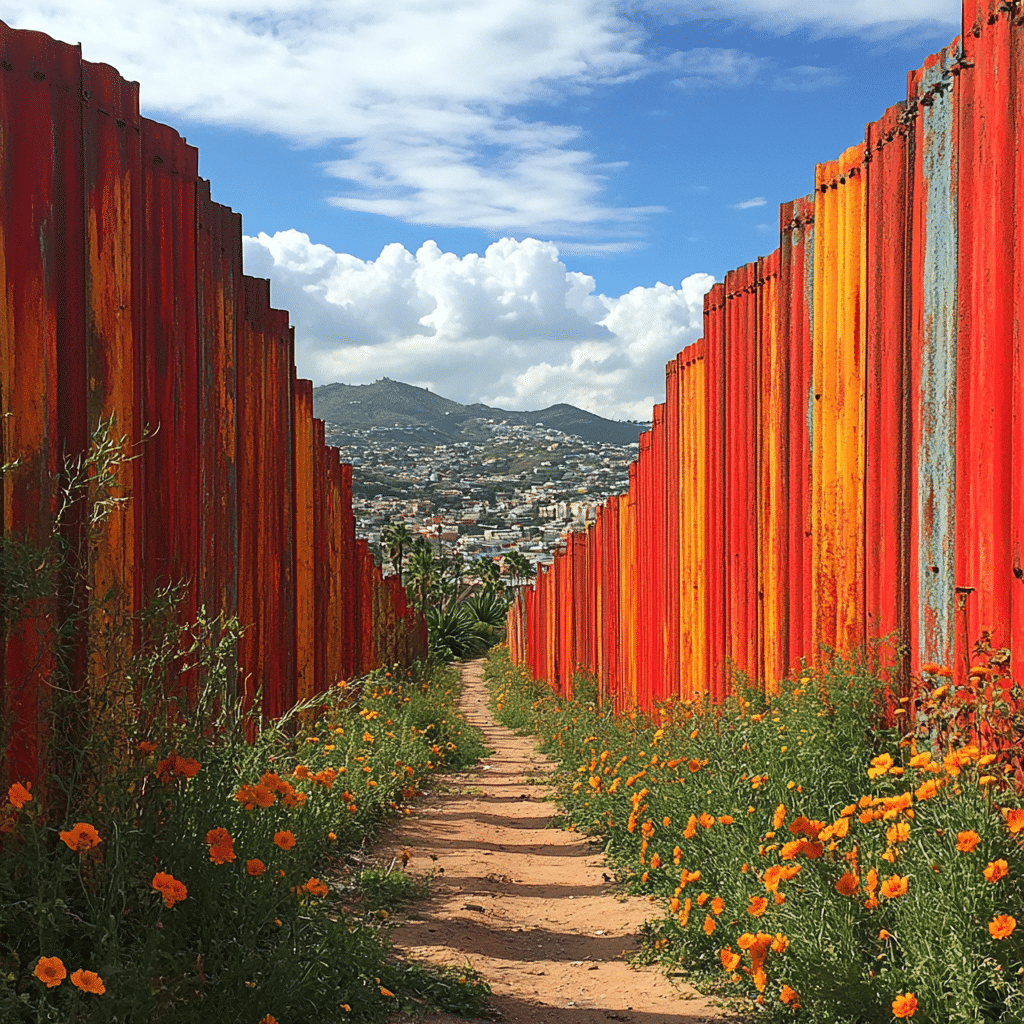Understanding the Mexican Border: Key Facts for 2024
The Mexican border is a hot-button issue in today’s political landscape, making headlines from coast to coast. Stretching approximately 1,954 miles, this crucial boundary is not just a line on a map—it’s a tape measure of national security, economic impact, and humanitarian considerations. As of 2024, we’ve got nearly 2.2 million migrant encounters on record in just the past year, a staggering 20% increase from 2023 as reported by the Department of Homeland Security. This surge reflects ongoing turmoil—namely, economic instability and higher violence levels in regions like Guerrero and Michoacán, Mexico.
So, let’s dive deep into the key facts about the Mexico border that every American needs to understand. From historical treaties to economic interdependence, the complexities surrounding this vital frontier need to be tackled head-on, especially as we gear up for the upcoming elections. It’s time to shed light on the truth, free from the fog of misinformation and political correctness that’s all too common.

1. The Current State of the Mexican Border: Statistics and Trends
The Mexico United States border isn’t just a glowing line on the map; it’s a significant geopolitical frontier affecting our daily lives. Recent statistics reveal an alarming uptick in migrant crossings, with violations reaching over 2.2 million in just one year. This marks a serious worry for national security and raises legitimate questions about current immigration policies.
This spike isn’t a random spike—it’s a symptom of chronic issues simmering in parts of Mexico. Areas like Guerrero and Michoacán regularly battle economic hardship and violence, sending vast numbers of migrants northward. It’s essential to keep track of these trends not just for statistical sake, but because they directly affect American communities, social systems, and the conservative values we hold dear.
2. Top 7 Essential Facts About the Mexican Border in 2024

Analyzing the Future of the Mexico Border
As we march into 2024, the Mexico border debate evolves with multiple dimensions. Apprehensions about border security, migration, and trade need to be addressed proactively. Colleges, think tanks, and independent research bodies are diligently examining the long-term socio-economic effects of current border policies. The findings call for reforms that balance security with humanitarian concerns; we can’t turn a blind eye on either front.
The collaborative effort between the U.S. and Mexico is essential to navigate these challenges effectively. Creating programs that bolster legal immigration, stimulate local economies, and enhance security measures will lead us to a more stable future. Understanding the Mexican border is far more than statistics; it’s about the real human stories at play, unfolding in cities on both sides of the divide.
In conclusion, the Mexico United States border is not just a political talking point; it’s a topic that needs concrete facts, research, and shared human experiences. We’re standing at a crucial crossroad! Conservative voices need to remain empowered to advocate for secure borders, while also considering the individual narratives that encapsulate this multifaceted issue. If we want a future that resonates with traditional values and economic prosperity, we better start paying attention now. Let’s rise above the noise and champion solutions that benefit everyone involved!
Mexican Border Facts: What You Must Know About Today
Fun and Fascinating Trivia about the Mexican Border
Did you know that the Mexican border is one of the busiest international boundaries in the world? Stretching over 1,900 miles, it sees millions of crossings every year. This border not only separates two nations but also shares a vibrant tapestry of cultures, economies, and communities. For example, cities like San Diego and Tijuana are so closely intertwined that folks often cross back and forth for work, entertainment, and even shopping. Speaking of entertainment, you can find hot Actors and actresses from both sides of the border making waves in Hollywood, bringing their unique stories to the big screen, much like cult classic Movies that capture the imagination.
Now, let’s talk wildlife—yes, there’s a ton of it! The border region is home to some extraordinary species, many of which are unique to the area. From the majestic Mexican gray wolf to various migratory birds, the biodiversity along the Mexican border is remarkable. It serves as a crucial habitat and migration path, ensuring the balance of ecosystems. This blend of wildlife might remind some of Viktor Krums magical adventures in the Quidditch World Cup, highlighting the charm and wonder of nature.
Culturally, the Mexican border is a melting pot of traditions. Events like the Minnesota State Fair or the Valentine Stanley cup highlight how culturally rich and diverse our communities can be. The festivals on both sides of the Mexican border showcase food, music, and dance that reflect a shared history. Even in schools, like Portland Public schools, there is a focus on bilingual education, allowing the next generation to better connect with both American and Mexican cultures. Overall, understanding the Mexican border offers insights into how interconnected our lives truly are.

What is the Mexican border called?
The border between the U.S. and Mexico is often referred to simply as the U.S.-Mexico border.
Is the U.S.-Mexico border open 24 hours?
Passenger vehicle lanes are open around the clock, seven days a week, so you can cross anytime you need. However, commercial vehicle lanes operate from 6:00 AM to 6:00 PM on weekdays and from 6:00 AM to 2:00 PM on Saturdays.
What is the current border between the U.S. and Mexico?
The current border follows the Rio Grande from the Gulf of Mexico to El Paso, Texas, creating a natural barrier between the two nations.
Can I get back into the U.S. from Mexico without a passport?
You generally need a U.S. passport to re-enter the country, but sometimes border agents might let you in if you have other documents like a birth certificate or naturalization papers, though that’s on a case-by-case basis.
Which U.S. city is closest to the Mexico border?
El Paso in Texas is the closest U.S. city to the Mexico border, right across from Ciudad Juárez.
Do you need a passport to go to Mexico?
Yes, you do need a passport to go to Mexico, whether you’re traveling for tourism or business.
Can you cross tires to Mexico?
You can’t cross tires into Mexico, as that’s typically against regulations, and there are rules regarding what you can bring across the border.
What is the easiest border crossing into Mexico?
The easiest border crossing into Mexico is usually through the San Ysidro port of entry, located just outside San Diego in California.
Where do you cross from Texas to Mexico?
In Texas, you can cross into Mexico at various points, but one of the most common is the bridge from El Paso to Ciudad Juárez.
Can US citizens live in Mexico?
Yes, U.S. citizens can live in Mexico, but they must follow the country’s immigration laws and obtain the proper visas or permits to stay long-term.
Who owns the border between U.S. and Mexico?
The border between the U.S. and Mexico is maintained as per a treaty, which ensures both countries have defined rights and responsibilities over the land.
What is Mexico best known for?
Mexico is best known for its rich culture, delicious cuisine, beautiful beaches, and its historical sites, like ancient Mayan ruins.
Can a U.S. citizen be denied entry back into the USA?
Yes, a U.S. citizen can be denied re-entry to the USA if there are issues with documentation or if they encounter legal problems.
Can felons get a passport?
Felons can face challenges getting a passport, but it’s not impossible; it often depends on the nature of their conviction and whether they’ve completed their sentence.
Can you come back to US with a driver’s license?
A driver’s license alone typically isn’t enough to re-enter the U.S.; you’ll generally need a passport or a passport card, especially when coming from abroad.
What is the border between Texas and Mexico called?
The border between Texas and Mexico doesn’t have a specific name; it’s usually just referred to as the Texas-Mexico border.
What is the border at Tijuana called?
The border at Tijuana is commonly known as the San Ysidro port of entry, connecting it to San Diego, California.
What are the 4 borders of Mexico?
The four states that border Mexico are California, Arizona, New Mexico, and Texas, forming a diverse landscape along the southern U.S. border.
What is the name of the border between Texas and New Mexico?
The name of the border between Texas and New Mexico is simply called the Texas-New Mexico border.





































